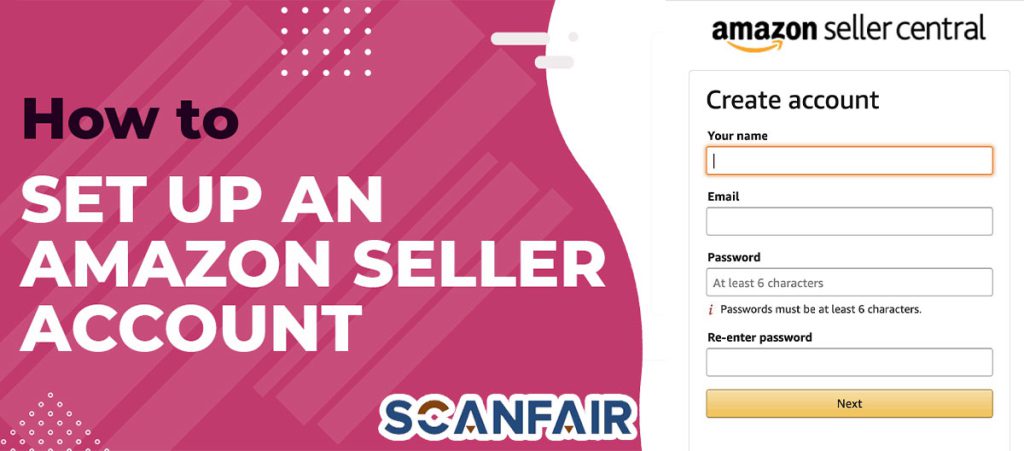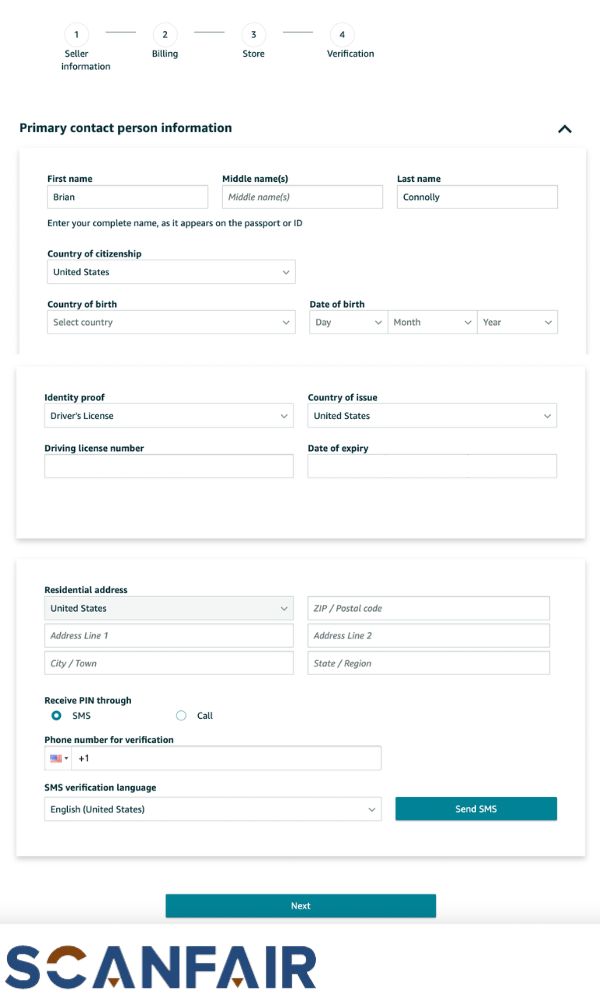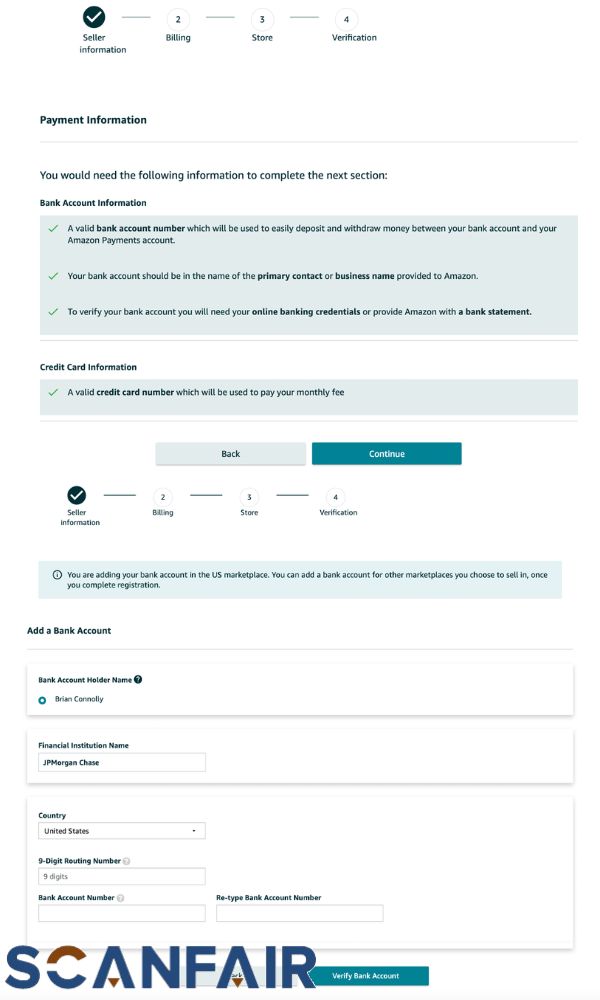In the world of e-commerce, Amazon stands as a colossal marketplace, providing entrepreneurs and businesses with unparalleled opportunities to reach a global audience. One of the key strategies for success on this platform is the Fulfillment by Amazon (FBA) program, which allows sellers to leverage Amazon’s vast logistics network. To embark on this journey, you must first understand the meticulous process of creating an FBA account. In this scientific guide, we will delve deep into the step-by-step procedure, ensuring you are well-equipped to initiate your e-commerce endeavors with precision. The purpose of this Scan Fair article is to learn how to create an Amazon FBA account.
Understanding the Basics of FBA
Before we dive into the account creation process, let’s establish a foundational understanding of Fulfillment by Amazon.
Fulfillment by Amazon (FBA) is a service offered by Amazon that enables sellers to store their products in Amazon’s fulfillment centers. Once an order is placed, Amazon takes care of packing, shipping, and customer service on behalf of the seller. This service streamlines operations for sellers, allowing them to focus on product development and marketing.
Prerequisites for FBA Account Creation
Creating an FBA account involves several prerequisites that must be in place before you initiate the process. These prerequisites are crucial to ensure a smooth onboarding experience.
- Amazon Seller Account (Professional): To use FBA, you must have an active Amazon Seller Account. The professional seller account provides access to advanced selling tools and is a requirement for using FBA.
- Tax Information: Prepare your tax information, including your Tax Identification Number (TIN) or Social Security Number (SSN), as this will be required during the registration process.
- Business Information: Have essential business details such as your business name, address, and contact information ready.
- Bank Account: You’ll need a valid bank account where Amazon can deposit your earnings. Ensure the account is set up and ready to receive payments.
- Product Listings: You should have your product listings ready on Amazon. Ensure your products comply with Amazon’s policies and guidelines.
Step-by-Step Account Creation
Now that you have the prerequisites in order let’s walk through the detailed process of creating an FBA account.
Step 1: Log into Your Amazon Seller Account
Visit the Amazon Seller Central website and log in using your professional seller account credentials.
Step 2: Start the FBA Registration Process
Navigate to the ‘Inventory’ tab and select ‘Add a Product.’
Search for an item you intend to sell through FBA. Click on the item’s listing, and then click ‘Sell Yours.’
Step 3: Set Up Fulfillment by Amazon
Choose ‘I want Amazon to ship and provide customer service for my items if they sell.’ This option signifies your intent to use FBA.
Review and accept the terms and conditions of the Amazon Services Business Solutions Agreement.
Step 4: Complete Your Seller Profile
You’ll be prompted to complete your seller profile. Provide all requested information, including business details and tax information.
Step 5: Choose Your Shipping Method
Select your preferred shipping method to send your products to Amazon’s fulfillment centers. You can choose to ship individually or in bulk.
Step 6: Add Product Listings
Add your product listings to Amazon. Ensure accuracy and compliance with Amazon’s listing policies.
Step 7: Complete the Account Creation Process
Review your information one last time and click ‘Submit.’
Step 8: Wait for Approval
Your FBA account will undergo a review process by Amazon. Approval typically takes a few days. Once approved, you’ll receive an email notification.
Optimizing Your FBA Account
Congratulations on successfully creating your FBA account! However, the journey doesn’t end here. To maximize your success on Amazon, you must optimize your FBA account continually.
- Inventory Management: Regularly update your product listings, ensuring accurate pricing, availability, and product information.
- Customer Service: Leverage Amazon’s customer service capabilities to provide exceptional service to your customers. Address inquiries and issues promptly.
- Marketing: Utilize Amazon’s advertising tools to promote your products and increase visibility.
- Performance Metrics: Monitor key performance metrics, such as customer feedback, order defect rate, and late shipment rate, to maintain a high seller rating.
- Expand Your Product Line: Consider expanding your product offerings to reach a broader audience.
Troubleshooting and Common Issues
In the world of e-commerce, challenges may arise. Here are some common issues sellers encounter when using FBA and how to address them scientifically:
- Inventory Management: Running out of stock or overstocking can impact your sales. Employ data analytics to predict demand and optimize your inventory levels.
- Fulfillment Fees: Understand Amazon’s FBA fee structure and use pricing strategies to maintain healthy profit margins.
- Returns and Refunds: Implement a clear returns policy and handle returns efficiently to maintain customer satisfaction.
Advanced Strategies for FBA Success
Now that you’ve laid the groundwork for your FBA business let’s explore some advanced strategies that can set you apart in the competitive world of e-commerce:
- Keyword Optimization: Conduct thorough keyword research to identify the most relevant and high-converting keywords for your products. Incorporate these keywords into your product listings and advertising campaigns to improve discoverability.
- Sponsored Products: Utilize Amazon’s Sponsored Products feature to boost the visibility of your products. Craft compelling ad campaigns and monitor their performance to ensure a healthy return on investment.
- Inventory Forecasting: Leverage data analytics to forecast demand and optimize your inventory levels. This can help you avoid stockouts and reduce storage costs.
- Fulfillment Network Placement: Optimize your FBA inventory placement by utilizing Amazon’s inventory placement service. This can help reduce shipping costs and improve delivery times.
- International Expansion: Consider expanding your reach by selling internationally through Amazon Global Selling. Research target markets and adapt your listings to local preferences and languages.
Staying Compliant with Amazon Policies
To maintain a successful FBA business, it’s crucial to stay compliant with Amazon’s policies and guidelines. Amazon has strict rules regarding product listings, customer service, and account health. Deviating from these policies can result in penalties or account suspension.
Some key areas to focus on include:
- Product Listings: Ensure that your product listings are accurate and do not contain any prohibited content. Follow Amazon’s guidelines for product images, titles, and descriptions.
- Customer Service: Respond to customer inquiries and address issues promptly and professionally. A high level of customer satisfaction is essential for maintaining a healthy seller rating.
- Order Fulfillment: Meet Amazon’s shipping and delivery standards. Use Amazon’s shipping labels and follow their packaging requirements.
- Product Quality: Deliver products that meet or exceed customer expectations in terms of quality and condition. Be prepared to handle returns and refunds efficiently.
Scaling Your FBA Business
As your FBA business grows, scalability becomes a key consideration. Here are some strategies for scaling your operations:
- Product Diversification: Expand your product catalog by introducing complementary or related items. This can help increase your revenue streams.
- Outsourcing: Consider outsourcing tasks like product photography, listing optimization, and customer service to focus on strategic aspects of your business.
- Amazon Advertising: Allocate a portion of your budget to Amazon advertising to boost product visibility and sales.
- Fulfillment Centers: Explore Amazon’s Multi-Channel Fulfillment (MCF) service, which allows you to fulfill orders from other sales channels using Amazon’s network.
Monitoring and Adapting to Market Trends
The e-commerce landscape is dynamic, and market trends can change rapidly. It’s essential to stay informed about industry developments and adapt your strategies accordingly.
- Competitor Analysis: Continuously monitor your competitors and adjust your pricing and marketing strategies to stay competitive.
- Customer Feedback: Pay close attention to customer reviews and feedback. Use this information to make improvements to your products and customer service.
- Data Analytics: Make data-driven decisions by analyzing sales, customer behavior, and advertising performance. This can help you identify opportunities for growth and optimization.
Conclusion and Future Prospects
Creating an FBA account on Amazon is not just a transactional process; it’s the beginning of a dynamic and potentially lucrative journey in the world of e-commerce. With a scientific and strategic approach, you can navigate the complexities of FBA account creation and build a successful online business.
Remember that success in e-commerce requires ongoing dedication, adaptability, and a commitment to delivering exceptional value to your customers. Stay informed, leverage data, and be proactive in addressing challenges as they arise.
As you embark on this journey, keep in mind that the e-commerce landscape will continue to evolve. Stay open to innovation and be ready to pivot your strategies to seize new opportunities as they emerge. With diligence and a scientific mindset, your FBA business on Amazon can thrive and grow, offering you the potential for long-term success in the ever-expanding world of online retail.



